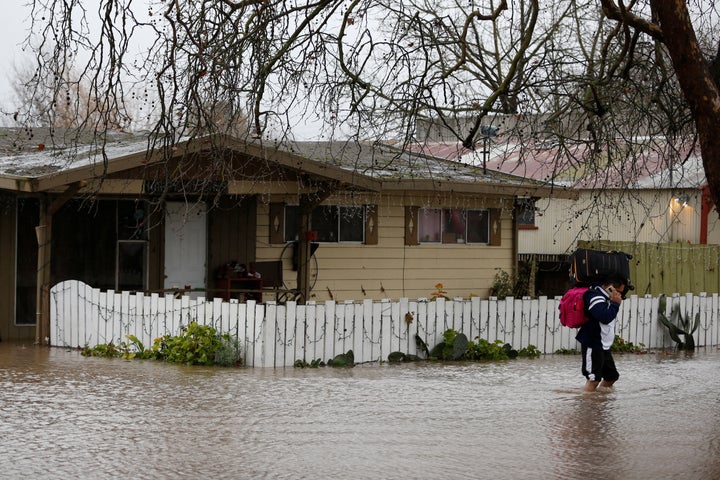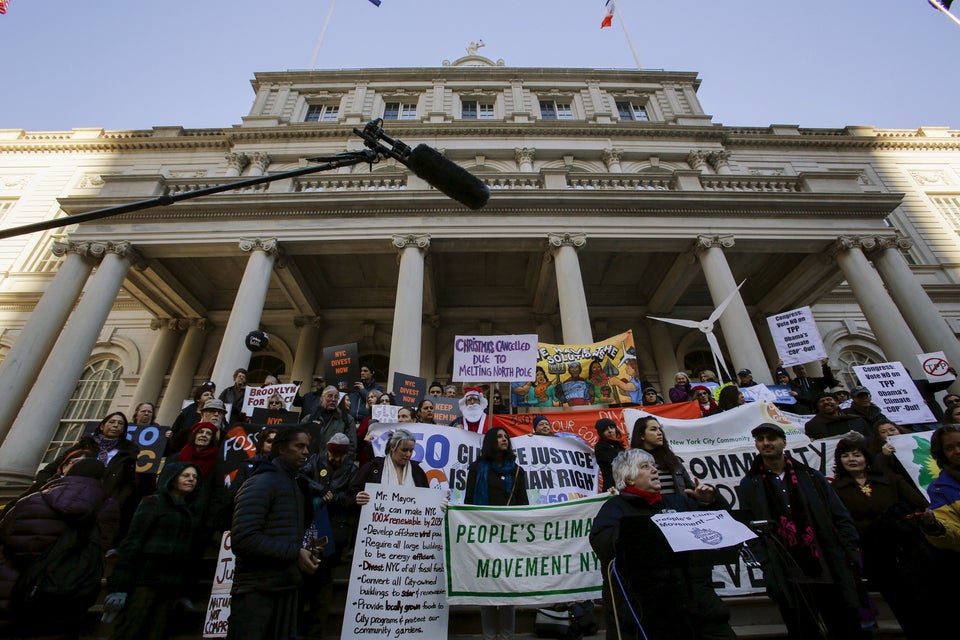It goes without saying that major natural disasters like Hurricane Katrina and Superstorm Sandy, deservedly, tend to capture far more media attention than less extreme, more localized flooding.
But ignoring those minor storms could prove costly, according to a new study authored by University of California-Irvine researchers and published last month in the Earth’s Future journal.
That’s because the impact of those minor storms could prove even more destructive in the near future. As is the case with extreme rainfall events, these storms are becoming increasingly common due to our warming planet.
Just because these storms tend to fly under the radar both in media and research circles doesn’t mean they should be taken any less seriously, according to study co-author Amir AghaKouchak, a civil and environmental engineering professor at University of California-Irvine.
“Non-extreme weather events don’t get a lot of attention, but we spend a lot of money on them,” AghaKouchak told The Huffington Post. “The cumulative costs are significant and we need to start monitoring them and collecting data to understand them better.”
AghaKouchak was inspired to look into the collective impacts of these smaller flooding events after he learned of the so-called long tail theory, which suggests the cumulative impact of a frequent, minor event could match or exceed that of a rare, major event.
He wondered if the impacts of more common, less extreme flooding events that might strike a coastal U.S. city, for example, a few times per month or a few times a year might similarly match — or even exceed — the impacts associated with major disasters on the magnitude of a Katrina or Sandy.
The results, based on a cumulative hazard index developed by the researchers, indicate that less extreme “nuisance” flooding could prove just as destructive to many cities, over time, as those extreme events.
The researchers’ analysis considered the future risk of flooding events ranging from minor “nuisance” flooding and extreme disasters and compared estimates of these storms’ impacts in 11 U.S. coastal cities.
Their analysis found that five of the cities — San Francisco, Seattle, Miami, New York and Washington, D.C. — had estimated impacts associated with minor flooding that was just as, or more, serious than the impacts associated with extreme events.

Of course, the study notes, direct comparisons between the varying impacts of different types of storms are difficult to make, particularly when it comes to intangible costs like human fatalities that can be caused by extreme storms.
But still, the costs associated with minor storms can prove tremendous ― and life-threatening in their own right.
“If we act too late, we will have significant negative impacts,” AghaKouchak said.
Such flooding can significantly degrade infrastructure like roads and building foundations. It can also impact sewer infrastructure, potentially resulting in serious public health risks. These minor flooding events are also a drain on municipal budgets — due to the resources required to pump water out of streets — and also can force the closure of schools and businesses.
Rising sea levels spurred on by climate change are contributing to increased frequency, and an increased cumulative effect, of these storms.
In D.C., the study noted, the number of hours of nuisance flooding per year has increased almost 400 percent over the last 50 years, from about 19 hours between the years 1930 and 1970 to about 94 over the past two decades. Projections indicate that number will continue to grow at an increasing rate — to as much as 700 hours per year — by 2050.
To address the problem, AghaKouchak said coastal cities will need to get proactive with flood control measures, though he added that there is no one-size-fits-all solution.
New York City is already working to do just that, launching an ambitious flood resiliency plan that includes the large “Big U” project aims to flood-proof lower Manhattan.
The $505 million project, however, is not yet funded fully. And, of course, what works in New York may not work in Miami — or anywhere else for that matter.
“These issues are very local and there is no single recipe for all cities around the country,” AghaKouchak said. “Each city has to come up with their own plan, and each plan won’t necessarily work in other places.”
The issue is growing more serious with time. The National Oceanic and Atmospheric Administration’s latest sea-level rise estimate anticipates scenarios ranging from 1 foot to an “extreme” 8.2 feet rise by 2100.
Beyond the inconvenience of shutting down roads or schools, the trend could force millions of people from their homes. A recent study estimated that as many as 13.1 million Americans could be displaced if the sea level rises 6 inches by century’s end. An estimated 4.2 million people would be forced out of their homes by a 3-inch rise, according to the study.
Because the stakes are so high, AghaKouchak believes action should be taken— and funded — as quickly as possible.
“This may not get a lot of attention, but beyond a certain point, we will see the impacts everywhere,” AghaKouchak said. “The sooner we take action and plan, the better.”
―-
Joseph Erbentraut covers promising innovations and challenges in the areas of food, water, agriculture and our climate. Follow Erbentraut on Twitter at @robojojo. Tips? Email joseph.erbentraut@huffingtonpost.com.

